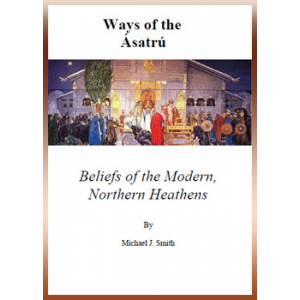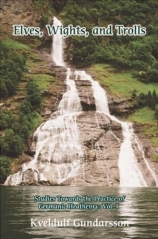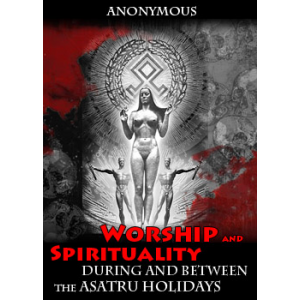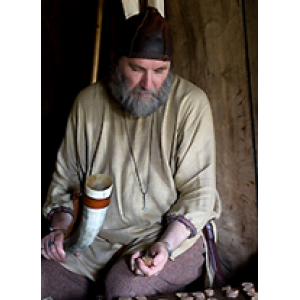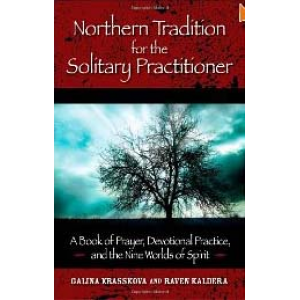
Book: Northern Tradition For The Solitary Practitioner by Galina Krasskova
Northern Tradition for the Solitary practitioner is a ground-breaking look at the development of devotional work within the body of polytheistic religious traditions ranging from Theodism to asatru to Norse Paganism, that comprise the greater umbrella of the Northern Tradition. While interest in devotional and experiential work within these traditions has been growing rapidly over the past few years, this is the first book to offer an inclusive look at the diverse scope and breadth of such practices as a living, modern-day religion. It features an in-depth exploration of altar work, prayer, prayer beads, ritual work, sacred images, lore, and a thorough examination of the common core cosmology that forms the foundation of belief for the vast expanse of Northern Tradition communities.Northern Tradition for the Solitary practitioner is clear review of Norse mythology, combined with modern viewpoints from many perspectives.Some practical devotional ideas that are stimulating. a great book to use as a spiritual starting point in this area.
Northern Tradition for the Solitary practitioner is not denomination-specific: rather, it seeks to provide an entry into interior practice for anyone involved in a branch of this broad family of traditions of the ancient Norse, Germanic, and Saxon peoples, using material suitable for the solitary, independent practitioner. Those outside of the Northern Tradition who wish to deepen their own devotional practice will find this book helpful in their own work, as well.
This important new title can be seen as a companion book to Galina Krasskova's Exploring the Northern Tradition or it can stand entirely on its own.
It can be very difficult to go it alone in a tradition that organizes itself in 'hearths' and 'kindreds'. This book is not fluffy-bunny, nor is it extremist towards one perspective or another. It provides the information one needs to begin structuring one's own practice. after years of having to adapt group-oriented practices to solitary observances, I found this book to be a treasured addition to my bookshelf. The language is direct, the tone is honest, and the author tries very hard to keep a balanced view of some hotly contested beliefs within the community.
Galina Krasskova is a free-range tribalist Heathen who has been a priest of Odin for more than a decade. Her primary interest is Heathen devotional work, and she has both written and lectured extensively on the subject. Krasskova is a Northern Tradition shaman currently residing in New York, where she is pursuing her masters in religious studies. She is the author of several books, including Exploring the Northern Tradition.
Raven Kaldera is a Northern-Tradition Pagan shaman, diviner, homesteader, activist, founding member of the First Kingdom Church of asphodel, and managing editor of asphodel Press. He has written and published numerous books and articles, including Urban Primitive and the Northern-Tradition Shamanism series.
Free eBooks (Can Be Downloaded):
Shanddaramon - Self Initiation For The Solitary WitchScott Cunningham - Wicca A Guide For The Solitary Practitioner
Scott Cunningham - Living Wicca A Further Guide For The Solitary Practitioner

